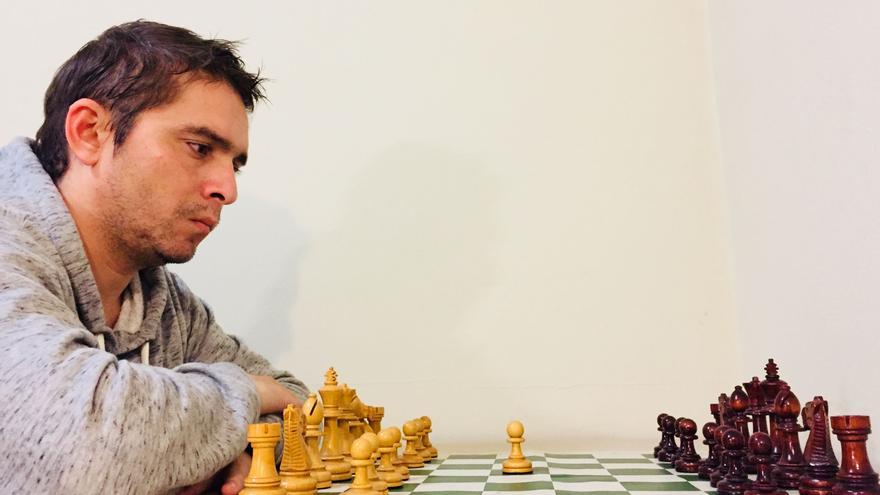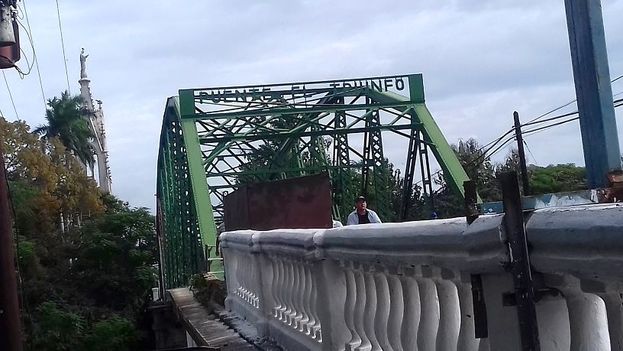
![]() 14ymedio, Julia Mézenov, Isabela de Sagua | 1 March 2019 — State or private, the difference is no small thing in Isabela de Sagua, where a seafood dish can be half or double the size according to the structure of its ownership. The coastal town — which has spent decades in oblivion — is experiencing a rebirth after the flexibilizations for self-employment started almost a decade ago.
14ymedio, Julia Mézenov, Isabela de Sagua | 1 March 2019 — State or private, the difference is no small thing in Isabela de Sagua, where a seafood dish can be half or double the size according to the structure of its ownership. The coastal town — which has spent decades in oblivion — is experiencing a rebirth after the flexibilizations for self-employment started almost a decade ago.
The so-called Venice of Cuba has benefited since 2011 from the liberalization in the food services sector, which authorized paladares (private restaurants) to serve up to 50 customers and allowed them to offer previously forbidden products such as shrimp, lobster and a wide variety of the seafood that is common in the area.
Now, years later, private businesses have flourished to such an extent that they outnumber the state business. And it is because of this, the private owners say, that state authorities have suddenly increased inspections of their successful businesses. continue reading
Up until eight years ago, visitors who arrived in Isabela de Sagua, in the province of Villa Clara, had to work hard to find something to eat in a city with decadent state cafés and a large informal fish and seafood market that forced tourists to plunge into illegality to be able to enjoy a moderately appetizing table. Anyone who approached a local restaurant barely found snacks and fried chicken.
Despite these dark years, the port, which has been demolished and has no commercial value, is still reputed to be one of the best places on the island to taste oysters, very common mollusks on Cuban coasts. With a reputation for being an aphrodisiac, along with an intense flavor and the ability to mix very well with tomato juice, this dish attracts thousands of travelers every year to Isabela de Sagua.
The group of cays that surrounds the area provides a favorable ground for oysters to thrive and, according to one of the cooks of the Las Casitas de Isabela restaurant, it is a dish in “high demand” among national and foreign customers. Oysters can be served stewed or smoked, although there are also many who prefer them in vinegar.
However, beyond the stoves and frying pans, this delicacy leaves some disappointed. Private restaurants receive a huge influx of diners regardless of the day of the week, because they serve large portions of seafood and are not victims of the diversion of resources (i.e. stealing) and corruption that mark the state services, which has put the authorities on guard.
Some owners consider that the increase in inspections by official inspectors in recent times is aimed at reducing their profits, fining them or even ordering their closure.
“Sometimes we receive up to 15 families on the same day,” says an employee of the Casablanca restaurant. When one paladar is full, the owners themselves send the customers to another location and, next to the menu, the most valued assets are the ocean breezes and the proximity to the sea.

Coinciding with this increase in controls on the private sector, state restaurants have launched into the competition arena and started offering seafood, although the price difference is still notable. While on ’official’ menus a lobster dish will never cost less than 11 CUC, in the paladares it barely exceeds 6.
The inspectors demand that the owners show invoices for having bought the product in an official store, which the owners consider “unfair and ridiculous.”
“If we’re so close to the coast, who’s going to buy seafood from a store freezer?” they ask.
The prohibition against Cuban citizens using motorized vessels to travel in territorial waters to fish on a larger scale, together with the prohibition that makes it illegal for private fishermen to sell their products to self-employed people, means that the people have resorted to the ’informal’ market. The sea is the wealth of Isabela and, also, its primary perdition.
Seafood fishermen are obliged to sell all their products to the State at prices far removed from those supported by the market, so they prefer to offer oysters, lobsters and shrimp on the black market, from which the whole town lives. The risk to them is fines and the confiscation of the flimsy boats they use for fishing, but the owner of a paladar faces a greater danger: the possible closure of their business.
“I do not put the seafood in the menu, but everyone who comes to Isabela knows that it’s included in rice, cocktails and enchiladas, they ask for it without our having to tell them it’s there,” says one of the owners consulted by this newspaper who prefers anonymity.
At the table of a restaurant, the Cuban-American Yisell Martín recognizes that the prices are tempting for those who come from abroad. “A grilled lobster comes out at less than 6 CUC,” she says, quoting a price that is about $6 US. “When you come home to visit the area, close to where you were born, you invite your whole family to taste seafood dishes. None of them could pay those prices with their official Cuban salary.”
“We do not go to the official restaurants because they put a lot of rice, sweet potatoes or lots of mayonnaise on the plate, but little seafood,” says another customer. “The best service is in the private ones, but without doubt you have to have some confidence to ask for certain dishes because we don’t want them to run out of food for the paladar to be closed,” he says.
In 2017 Hurricane Irma passed over Isabela de Sagua destroying innumerable houses. But private businesses are helping to recover the life of the town. “Who saw Isabela as she was and sees her now can not assimilate the tremendous change,” says Gertrudis, who lives there. “They offered to help me leave, but I love my land, even though we were not able to evacuate our belongings. Anyway, it’s already a memory, water under the bridge.”
The town is rising thanks to the seafood, the product that is both its danger and its survival.
_____________________
The 14ymedio team is committed to serious journalism that reflects the reality of deep Cuba. Thank you for joining us on this long road. We invite you to continue supporting us, but this time by becoming a member of 14ymedio. Together we can continue to transform journalism in Cuba.


